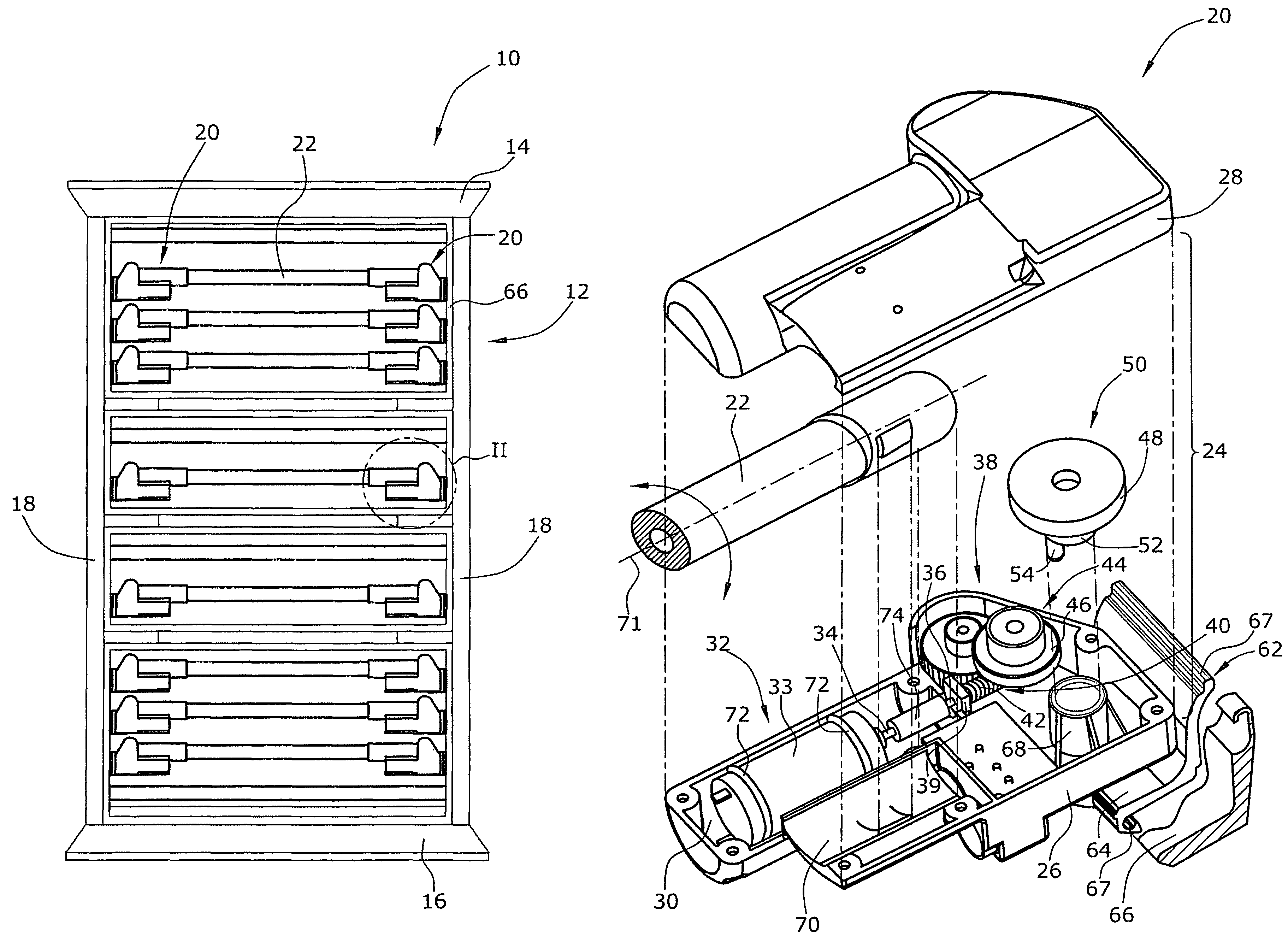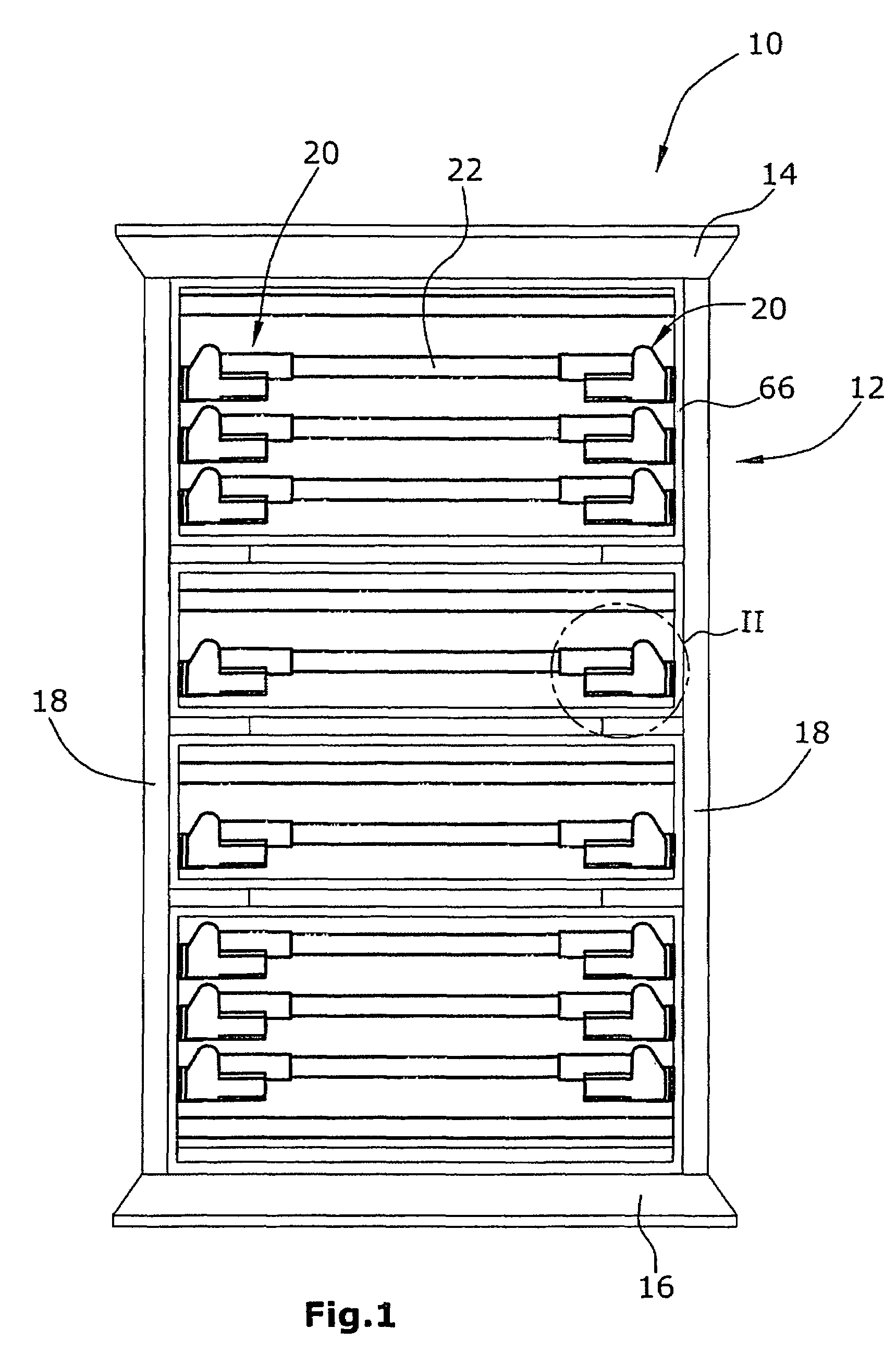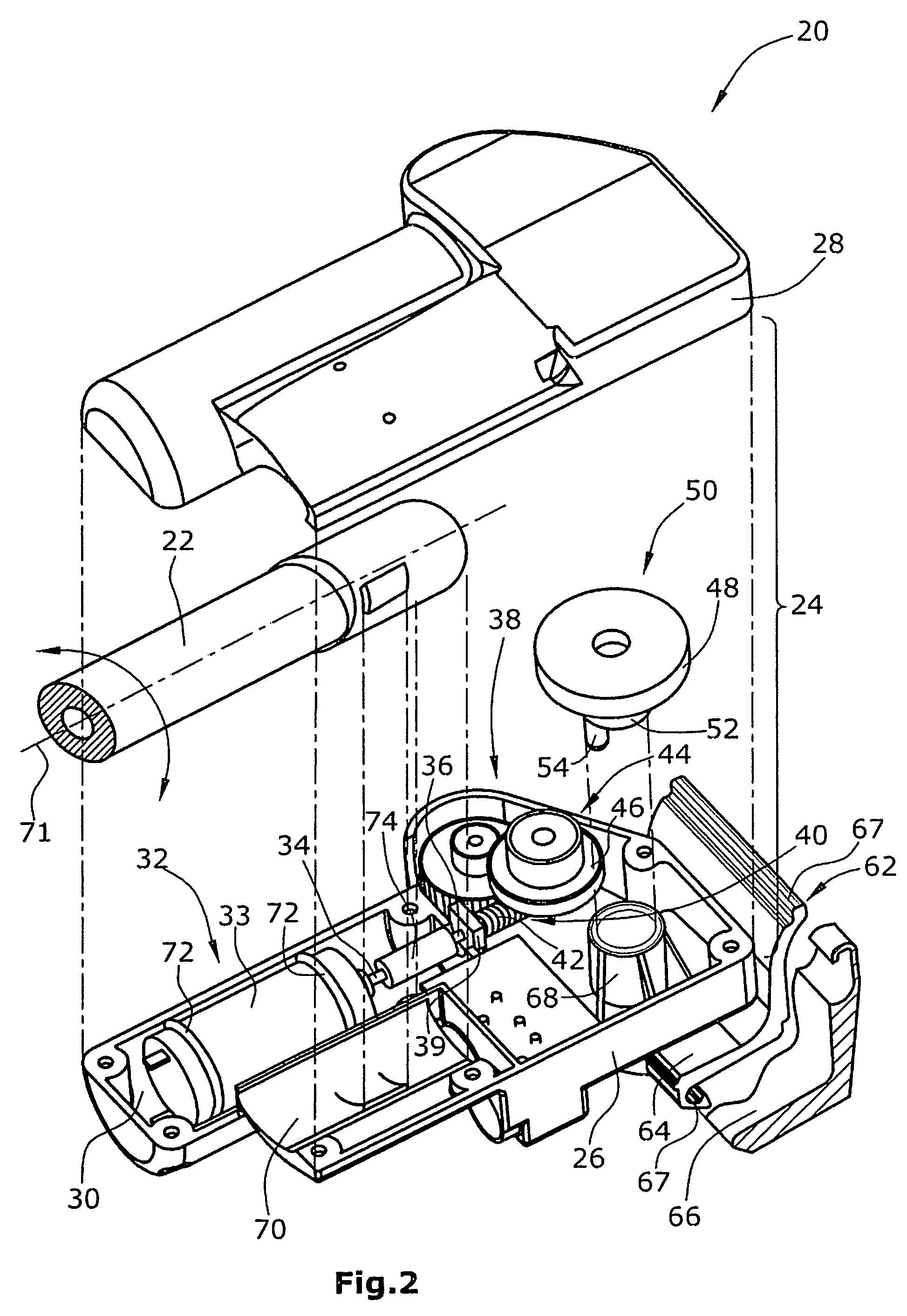Lying surface for a bed, in particular a healthcare and/or hospital bed
a technology for laying surfaces and beds, which is applied in the direction of bedsofas, tables, physical therapy, etc., can solve the problems of irritating and disturbing, the noise generated by pneumatic and electromotive actuators is not substantial, and the noise is not small. , to achieve the effect of small nois
- Summary
- Abstract
- Description
- Claims
- Application Information
AI Technical Summary
Benefits of technology
Problems solved by technology
Method used
Image
Examples
Embodiment Construction
with reference to an embodiment thereof and to the accompanying drawings. In the Figures:
[0031]FIG. 1 is a top plan view of a lying surface of a hospital or healthcare bed with the mattress omitted for clarity,
[0032]FIG. 2 is a perspective exploded view of a lifting unit and the coupling thereof to the frame structure of the lying surface,
[0033]FIG. 3 is a perspective view of a detail of the lifting member and the bearing element at which the lifting member is supported,
[0034]FIG. 4 is a top plan view of the bearing element of FIG. 3,
[0035]FIG. 5 is s section through the bearing element along line V-V in FIG. 4,
[0036]FIGS. 6 and 7 are sections along line V-V in FIG. 4, but through an alternative bearing element and lifting member, FIG. 6 showing the situation at minimum stroke and FIG. 7 showing the situation at maximum stroke,
[0037]FIGS. 8 and 9 are sections along line V-V in FIG. 4, but through another alternative bearing element and lifting member, FIG. 8 showing the situation at...
PUM
 Login to View More
Login to View More Abstract
Description
Claims
Application Information
 Login to View More
Login to View More - R&D
- Intellectual Property
- Life Sciences
- Materials
- Tech Scout
- Unparalleled Data Quality
- Higher Quality Content
- 60% Fewer Hallucinations
Browse by: Latest US Patents, China's latest patents, Technical Efficacy Thesaurus, Application Domain, Technology Topic, Popular Technical Reports.
© 2025 PatSnap. All rights reserved.Legal|Privacy policy|Modern Slavery Act Transparency Statement|Sitemap|About US| Contact US: help@patsnap.com



